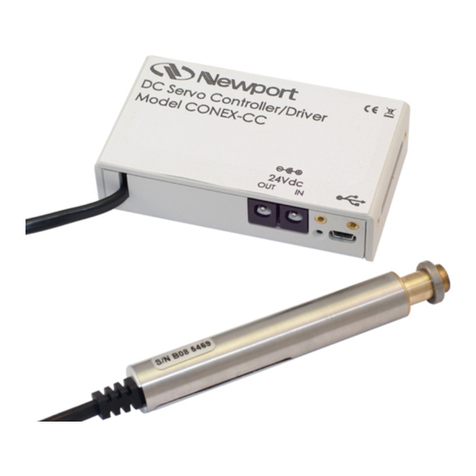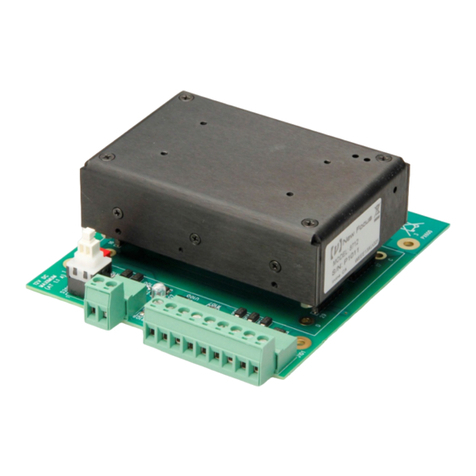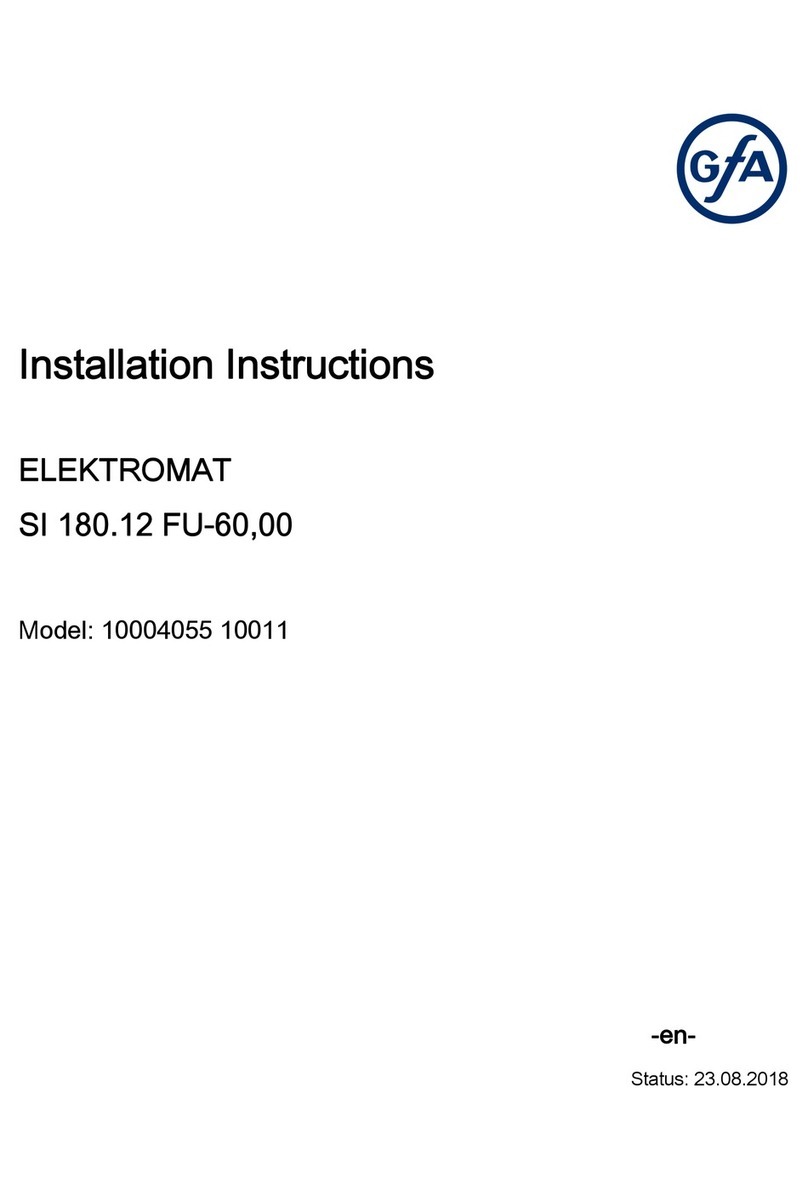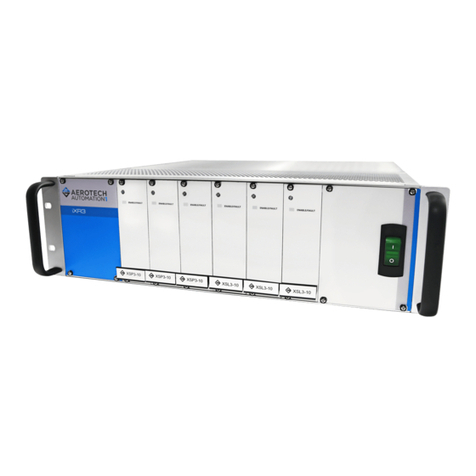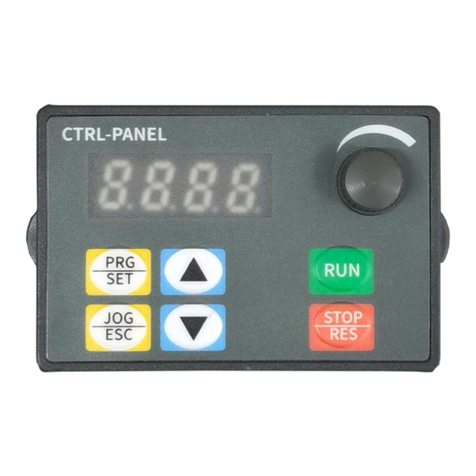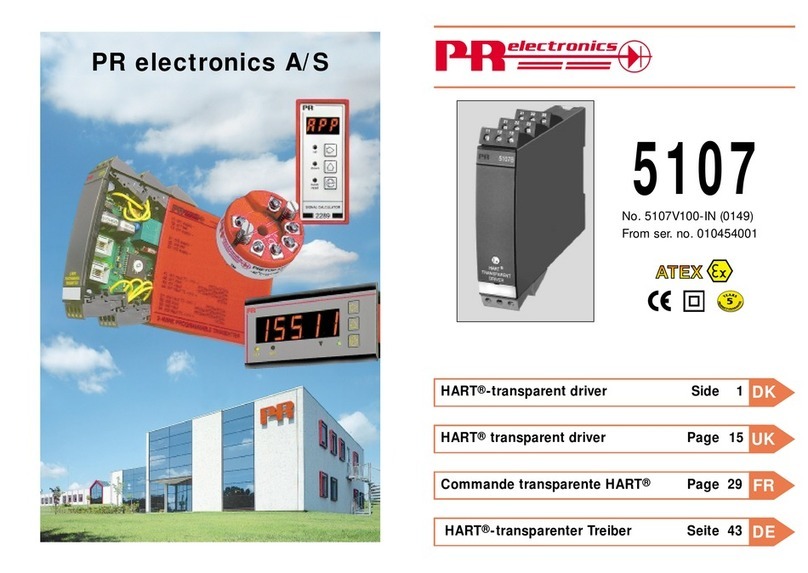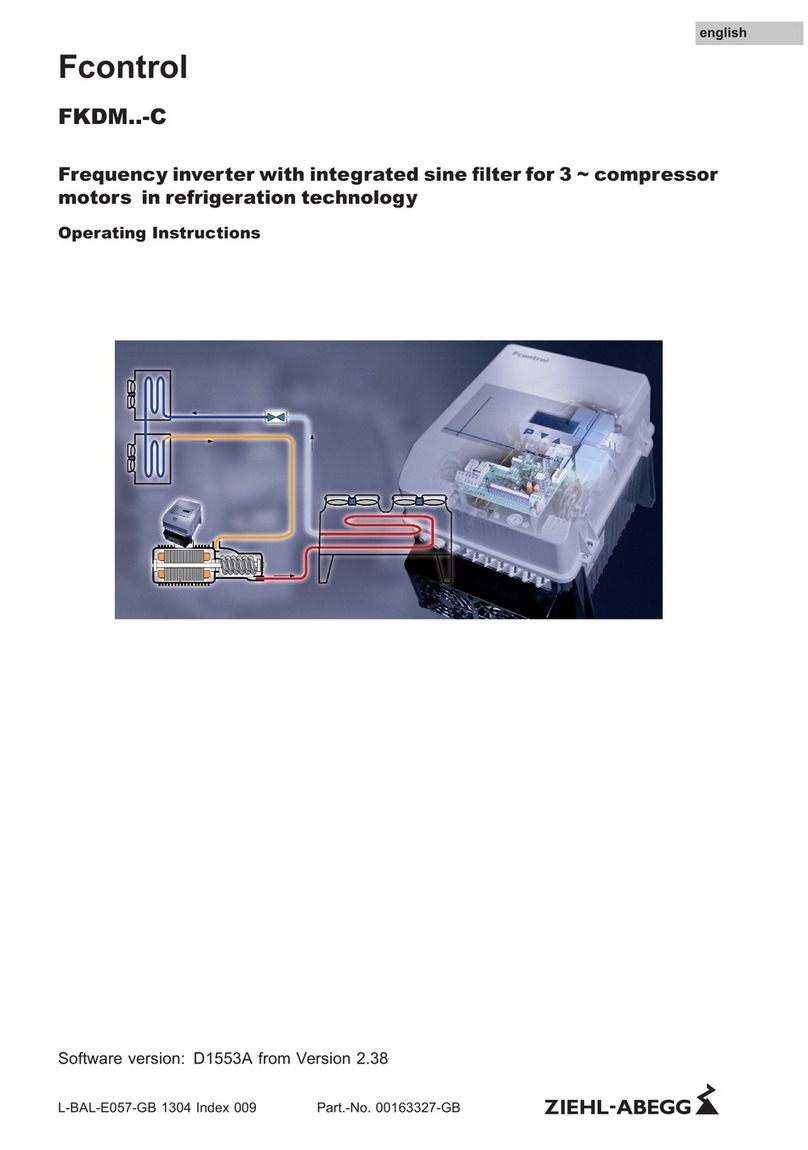Newport 5600 Series User manual

Artisan Technology Group is your source for quality
new and certied-used/pre-owned equipment
• FAST SHIPPING AND
DELIVERY
• TENS OF THOUSANDS OF
IN-STOCK ITEMS
• EQUIPMENT DEMOS
• HUNDREDS OF
MANUFACTURERS
SUPPORTED
• LEASING/MONTHLY
RENTALS
• ITAR CERTIFIED
SECURE ASSET SOLUTIONS
SERVICE CENTER REPAIRS
Experienced engineers and technicians on staff
at our full-service, in-house repair center
WE BUY USED EQUIPMENT
Sell your excess, underutilized, and idle used equipment
We also offer credit for buy-backs and trade-ins
www.artisantg.com/WeBuyEquipment
REMOTE INSPECTION
Remotely inspect equipment before purchasing with
our interactive website at www.instraview.com
LOOKING FOR MORE INFORMATION?
Visit us on the web at www.artisantg.com for more
information on price quotations, drivers, technical
specications, manuals, and documentation
Contact us: (888) 88-SOURCE | sales@artisantg.com | www.artisantg.com
SM
View
Instra

5600 Series
High Power Laser Diode Driver
User’s Manual
Artisan Technology Group - Quality Instrumentation ... Guaranteed | (888) 88-SOURCE | www.artisantg.com

Corporate Headquarters Canada Italy Netherlands Taiwon R.O.C.
Newport Corporation Telephone: 905-567-0390 Telephone: 02-924-5518 Telephone: 030-6592111 Telephone: 2-2769-9796
1791 Deere Avenue Facsimile: 905-567-0392 Facsimile: 02-923-2448 Facsimile: 030-6570242 Facsimile: 2-2769-9638
Irvine, CA 92714 France Japan Switzerland United Kingdom
Telephone: 949-863-3144 Telephone: 1-60 91 68 68 Telephone: 03-5379-0261 Telephone: 01-740-2283 Telephone: 01635-521757
Facsimile: 949-253-1800 Facsimile: 1-60 91 68 69 Facsimile: 03-5379-0155 Facsimile: 01-740-2503 Facsimile: 01635-521348
Belgium Germany
Telephone: 016-402927 Telephone: 06151-36 21-0
Facsimile: 016-402227 Facsimile: 06151-36 21-52
Newport Corporation, Irvine,
California, has been certified
compliant with ISO 9002 by the
British Standards Institution.
Artisan Technology Group - Quality Instrumentation ... Guaranteed | (888) 88-SOURCE | www.artisantg.com

Limited Warranty
Newport warrants that this product will be free from defects in materials and workmanship for a period of two
years from the date of shipment. If any such product proves defective during the applicable warranty period,
Newport, at its option, either will repair the defective product with charge for parts and labor or will provide a
replacement in exchange for the defective product.
In order to obtain service under this warranty, the customer must notify Newport of the defect before the
expiration of the warranty period and make suitable arrangements for the performance of service. In all cases the
customer will be responsible for packaging and shipping the defective product back to the service center specified
by Newport, with shipping charges prepaid. Newport shall pay for the return of the product to the customer if the
shipment is within the continental United States, otherwise the customer shall be responsible for all shipping
charges, insurance, duties and taxes, if the product is returned to any other location.
This warranty shall not apply to any defect, failure or damage caused by improper use or failure to observe proper
operating procedures per the product specification or operators manual or improper or inadequate maintenance
and care. Newport shall not be obligated to furnish service under this warranty 1) to repair damage resulting from
attempts by personnel other than Newport’s representatives to repair or service the product; 2) to repair damage
resulting from improper use or connection to incompatible equipment; 3) to repair damage resulting from
operation outside of the operating or environmental specifications of the product.
NEWPORT’S LIABILITY FOR THE MERCHANTABILITY AND USE OF THE PRODUCT IS EXPRESSLY
LIMITED TO ITS WARRANTY SET OUT ABOVE. THIS DISCLAIMER AND LIMITED WARRANTY IS
EXPRESSLY IN LIEU OF ANY AND ALL REPRESENTATIONS AND WARRANTIES EXPRESS OR
IMPLIED, INCLUDING BUT NOT LIMITED TO, ANY IMPLIED WARRANTY OF MERCHANTABILITY
OR OF FITNESS FOR PARTICULAR PURPOSE, WHETHER ARISING FROM STATUTE, COMMON LAW,
CUSTOM OR OTHERWISE. THE REMEDY SET FORTH IN THIS DISCLAIMER AND LIMITED
WARRANTY SHALL BE THE EXCLUSIVE REMEDIES AVAILABLE TO ANY PERSON. NEWPORT
SHALL NOT BE LIABLE FOR ANY SPECIAL, DIRECT, INDIRECT, INCIDENTAL OR CONSEQUENTIAL
DAMAGES RESULTING FROM THE USE OF THIS PRODUCT OR CAUSED BY THE DEFECT, FAILURE
OR MALFUNCTION OF THIS PRODUCT, NOR ANY OTHER LOSSES OR INJURIES, WHETHER A
CLAIM FOR SUCH DAMAGES, LOSSES OR INJURIES IS BASED UPON WARRANTY, CONTRACT,
NEGLIGENCE, OR OTHERWISE. BY ACCEPTING DELIVERY OF THIS PRODUCT, THE PURCHASER
EXPRESSLY WAIVES ALL OTHER SUCH POSSIBLE WARRANTIES, LIABILITIES AND REMEDIES.
NEWPORT AND PURCHASER EXPRESSLY AGREE THAT THE SALE HEREUNDER IS FOR
COMMERCIAL OR INDUSTRIAL USE ONLY AND NOT FOR CONSUMER USES AS DEFINED BY THE
MAGNUSOM-MOSS WARRANTY ACT OR SIMILAR STATE CONSUMER WARRANTY STATUTE.
©1998, Newport Corporation
Irvine, California, USA
Part No. 26788
IN-10982
Rev. A
Printed 10-Apr-00
Artisan Technology Group - Quality Instrumentation ... Guaranteed | (888) 88-SOURCE | www.artisantg.com

EC DECLARATION OF CONFORMITY
5600 Series High Power Laser Diode Driver
We declare that the accompanying product, identified with the “ ” mark, meets all
relevant requirements of Directive 89/336/EEC and Low Voltage Directive
73/23/EEC.
Compliance was demonstrated to the following specifications:
EN50081-1 EMISSIONS:
Radiated and conducted emissions per EN55011, Group 1, Class A
EN50082-1 IMMUNITY:
Electrostatic Discharge per IEC 1000-4-2, severity level 3
Rated Emission Immunity per IEC 1000-4-3, severity level 2
Fast Burst Transients per IEC 1000-4-4, severity level 3
Surge Immunity per IEC 1000-4-5, severity level 3
IEC SAFETY:
Safety requirements for electrical equipment specified in IEC 1010-1.
VP European Operations General Manager-Precision Systems
Zone Industrielle 1791 Deere Avenue
4534 Beaune-la-Rolande, France Irvine, Ca. USA
______________________ ______________________
Alain Danielo Jeff Cannon
Artisan Technology Group - Quality Instrumentation ... Guaranteed | (888) 88-SOURCE | www.artisantg.com

i
Table of Contents
1. General Information_______________________________________________1
1.1 Introduction_______________________________________________________ 1
1.2 Product Overview __________________________________________________ 1
1.3 Available Options and Accessories ____________________________________ 2
1.4 Safety Terms and Symbols___________________________________________ 2
1.4.1 Terms _______________________________________________________________ 2
1.4.2 Symbols _____________________________________________________________ 3
1.5 General Warnings and Cautions ______________________________________ 3
2. System Operation__________________________________________________5
2.1 Introduction_______________________________________________________ 5
2.2 Installation________________________________________________________ 5
2.2.1 AC Power Considerations________________________________________________ 5
2.2.2 Tilt-Foot Adjustment ___________________________________________________ 6
2.2.3 Rack Mounting ________________________________________________________ 6
2.2.4 Ventilation Requirements ________________________________________________ 6
2.2.5 Power-Up Sequence ____________________________________________________ 6
2.2.6 Quick Start ___________________________________________________________ 6
2.3 Introduction to the 5600 Front Panel __________________________________ 7
2.3.1 Model 5600___________________________________________________________ 7
2.4 General Operation _________________________________________________ 8
2.4.1 Display Elements ______________________________________________________ 8
2.4.1.1 Static Fields ________________________________________________________ 8
2.4.1.2 Non-Editable Data Fields ______________________________________________ 8
2.4.1.3 Editable Data Fields __________________________________________________ 8
2.4.1.3.1 Changing Data Fields ______________________________________________ 9
2.4.1.4 Controls ___________________________________________________________ 9
2.4.2 Main Screen _________________________________________________________ 10
2.4.3 Menu Structure _______________________________________________________ 10
2.4.3.1 Laser Setup Menu___________________________________________________ 10
2.4.3.2 Modulation Setup Menu ______________________________________________ 10
2.4.3.3 Communications Menu_______________________________________________ 11
2.4.3.4 System Menu ______________________________________________________ 12
2.4.3.4.1 Calibration Menu ________________________________________________ 13
2.4.3.5 Save/Recall Menu___________________________________________________ 13
Artisan Technology Group - Quality Instrumentation ... Guaranteed | (888) 88-SOURCE | www.artisantg.com

ii
2.5 Rear Panel Familiarization__________________________________________14
2.5.1 RS-232 Connector ____________________________________________________ 14
2.5.2 GPIB Connector______________________________________________________ 14
2.5.3 Modulation Input BNC Connector________________________________________ 15
2.5.4 Current Monitor BNC Connector_________________________________________ 15
2.5.5 Detector Input BNC Connector __________________________________________ 15
2.5.6 LDD Output Connector ________________________________________________ 15
2.5.7 Input Power Connector ________________________________________________ 15
2.5.8 GND Post___________________________________________________________ 15
2.5.9 Trigger Input BNC Connector ___________________________________________ 16
2.5.10 Trigger Output BNC Connector__________________________________________ 16
2.5.11 Interlock/Detector Connector____________________________________________ 16
2.6 Warm Up and Environmental Consideration___________________________ 16
3. Laser Diode Driver Operation ______________________________________17
3.1 CW/QCW Laser Diode Driver_______________________________________17
3.1.1 Introduction _________________________________________________________ 17
3.1.2 Laser Diode Protection Requirements _____________________________________ 17
3.2 Laser Safety Features ______________________________________________19
3.2.1 Conditions Which Can Automatically Shut Off the Laser Output. _______________ 19
3.2.2 Key switch interlock __________________________________________________ 19
3.2.3 Lockout Dial Button __________________________________________________ 20
3.2.4 Turn On Delay _______________________________________________________ 20
3.3 The Laser Connectors ______________________________________________20
3.3.1 External Modulation BNC______________________________________________ 21
3.3.2 Detector BNC _______________________________________________________ 21
3.3.3 Interlock____________________________________________________________ 21
3.3.4 Aux. Thermistor______________________________________________________ 21
3.4 Connecting to Your Laser___________________________________________22
3.4.1 Laser Diode Connections and Shielding ___________________________________ 22
3.4.2 Detector Feedback Connections__________________________________________ 24
3.4.3 Grounding Consideration_______________________________________________ 24
3.5 Laser Driver Operation_____________________________________________ 24
3.5.1 Quick Start__________________________________________________________ 24
3.5.2 Laser Main Screen____________________________________________________ 24
3.5.3 Laser Setup Menu ____________________________________________________ 25
3.5.3.1 Mode ____________________________________________________________ 26
3.5.3.2 Io Lim ___________________________________________________________ 27
3.5.3.3 Vcomp ___________________________________________________________ 27
3.5.3.4 Im Lim ___________________________________________________________ 28
3.5.3.5 Po Lim ___________________________________________________________ 28
3.5.3.6 Tol Time and Tol Iop________________________________________________ 28
3.5.3.7 Taux_____________________________________________________________ 28
3.5.3.8 Tamb ____________________________________________________________ 28
Artisan Technology Group - Quality Instrumentation ... Guaranteed | (888) 88-SOURCE | www.artisantg.com

iii
3.5.3.9 Ths ______________________________________________________________ 28
3.5.3.10 Vlas _____________________________________________________________ 28
3.5.3.11 Vf Loss __________________________________________________________ 29
3.5.3.12 Pulse Enable ______________________________________________________ 29
3.5.3.13 Pulse Width _______________________________________________________ 29
3.5.3.14 Pulse Rate ________________________________________________________ 29
3.5.3.15 Duty Cycle________________________________________________________ 29
3.5.3.16 PD Resp__________________________________________________________ 29
3.5.3.17 PD Zero __________________________________________________________ 29
3.5.4 Modulation Setup Menu________________________________________________ 29
3.5.4.1 Modulation Enable (Mod Enable) ______________________________________ 30
3.5.4.2 Frequency (Freq)____________________________________________________ 30
3.5.4.3 Modulation Type (Mod Type) _________________________________________ 30
3.5.4.4 Modulation Amplitude (Mod Amp) _____________________________________ 30
3.5.4.5 Io min and Io max___________________________________________________ 31
4. Principles of Operation____________________________________________33
4.1 Introduction______________________________________________________ 33
4.2 Laser Driver Theory of Operation ___________________________________ 33
4.2.1 Laser Interface _______________________________________________________ 34
4.2.2 Limit DAC __________________________________________________________ 35
4.2.3 Set Point DAC _______________________________________________________ 35
4.2.4 A/D Converter _______________________________________________________ 35
4.2.5 Current Source Voltage ________________________________________________ 35
4.2.6 Output Shorting_______________________________________________________ 35
4.2.7 Modulation Input Port__________________________________________________ 35
4.2.8 Photodiode Feedback Amplifier__________________________________________ 36
4.2.9 Constant Current, High Bandwidth Mode___________________________________ 36
4.2.10 Constant Current, Low Bandwidth Mode ___________________________________ 36
4.2.11 Constant Power Mode__________________________________________________ 38
4.2.12 Internal Modulation ___________________________________________________ 38
4.2.13 Pulse Generator_______________________________________________________ 38
4.3 Microprocessor Board _____________________________________________ 39
4.3.1 Microprocessor_______________________________________________________ 39
4.3.2 Memory_____________________________________________________________ 40
4.3.3 Laser Interface _______________________________________________________ 40
4.3.4 Front Panel Interface___________________________________________________ 40
4.3.5 GPIB Interface _______________________________________________________ 40
4.3.6 RS-232 Serial Interface_________________________________________________ 40
4.4 Power Supplies ___________________________________________________ 40
4.4.1 LDD Power Supplies __________________________________________________ 40
4.4.2 CPU Supply _________________________________________________________ 41
4.5 Interlock Operation _______________________________________________ 41
4.5.1 Laser Interlock _______________________________________________________ 41
Artisan Technology Group - Quality Instrumentation ... Guaranteed | (888) 88-SOURCE | www.artisantg.com

iv
5. Tips and Techniques ______________________________________________43
5.1 Introduction ______________________________________________________43
5.2 Laser Limits ______________________________________________________43
5.3 Modulating _______________________________________________________ 44
5.3.1 Grounding with Modulation_____________________________________________ 45
5.3.2 Current Limit when Modulating__________________________________________ 45
5.4 Grounding A Laser Diode___________________________________________46
5.5 Noise Specifications ________________________________________________47
5.6 Intermittent Contact Feature________________________________________47
5.7 VfMeasurements __________________________________________________47
6. Maintenance ____________________________________________________49
6.1 Introduction ______________________________________________________49
6.2 Fuse Replacement _________________________________________________49
6.3 Cleaning _________________________________________________________49
7. Calibration______________________________________________________51
7.1 Calibration Overview ______________________________________________51
7.1.1 Environmental Conditions ______________________________________________ 51
7.1.2 Warm-Up___________________________________________________________ 51
7.2 Laser Calibration__________________________________________________51
7.2.1 Recommended Equipment______________________________________________ 51
7.2.2 Local Operation Current Source Calibration ________________________________ 52
7.2.3 Remote Operation Current Source Calibration ______________________________ 53
7.2.4 Local Operation IPD Current Calibration ___________________________________ 54
7.2.5 Remote Operation IPD Current Calibration__________________________________ 55
7.2.6 Local Operation Laser Voltage Measurement Calibration______________________ 57
7.2.7 Remote Operation Laser Voltage Measurement Calibration ____________________ 58
7.2.8 Local Operation Pulse Width and Frequency Calibration ______________________ 59
7.2.9 Remote Operation Pulse Width and Frequency Calibration ____________________ 60
8. Factory Service __________________________________________________61
8.1 Introduction ______________________________________________________61
8.2 Obtaining Service _________________________________________________ 61
9. Error Messages __________________________________________________65
9.1 Introduction ______________________________________________________65
10. Specifications __________________________________________________67
Artisan Technology Group - Quality Instrumentation ... Guaranteed | (888) 88-SOURCE | www.artisantg.com

v
Tables
Table 1 - Laser Connector Pinouts____________________________________________________ 20
Table 2 - Recommended Test Equipment _______________________________________________ 51
Table 3 - Error Codes______________________________________________________________ 65
Figures
Figure 1 - Model 5600 Front Panel____________________________________________________ 7
Figure 2 - Main Screen_____________________________________________________________ 10
Figure 3 - Communications Menu ____________________________________________________ 11
Figure 4 - System Configure Menu____________________________________________________ 12
Figure 5 - Calibration Menu ________________________________________________________ 13
Figure 6 - Save/Recall Menu ________________________________________________________ 13
Figure 7 - Rear Panel______________________________________________________________ 14
Figure 8 - Laser Diode Protection Circuit______________________________________________ 19
Figure 9 - Main Screen_____________________________________________________________ 24
Figure 10 - Laser Setup Menu _______________________________________________________ 26
Figure 11 - Modulation Setup Menu __________________________________________________ 30
Figure 12 - 5600 Block Diagram _____________________________________________________ 33
Figure 13 - Laser Driver Block Diagram_______________________________________________ 34
Figure 14 - Constant Current - High Bandwidth Mode ____________________________________ 36
Figure 15 - Constant Current - Low Bandwidth Mode ____________________________________ 37
Figure 16 - Constant Power Mode____________________________________________________ 38
Figure 17 - Microprocessor Board Block Diagram_______________________________________ 39
Figure 18 - Power Supply Block Diagram______________________________________________ 41
Figure 19 - Current Limit Example ___________________________________________________ 46
Figure 20 - IPD Calibration Circuit ___________________________________________________ 54
Artisan Technology Group - Quality Instrumentation ... Guaranteed | (888) 88-SOURCE | www.artisantg.com

Artisan Technology Group - Quality Instrumentation ... Guaranteed | (888) 88-SOURCE | www.artisantg.com

1
CHAPTER 1
1. General Information
1.1 Introduction
This chapter describes the features, options, accessories, and specifications
of the Model 5600.
1.2 Product Overview
PRODUCT FEATURES
Stand alone operation
GPIB/IEEE 488.2 and RS-232C Interfaces
Full 16-bit control and characterization capabilities
Laser Diode Driver (LDD)
•10, 20, 40 or 65A CW/QCW
•Internal and External analog modulation
•Photodiode with reverse bias or Thermopile inputs
•Comprehensive laser diode protection features
The Model 5600 Laser Diode Driver is a result of Newport’s continuing
commitment to provide advanced laser diode instrumentation at affordable
prices.
Full Featured LDD Offer Complete Test and Characterization
Capabilities
Advanced circuit designs and careful layout of laser diode drivers provide
you with an extremely low noise, highly stable output current. External
analog modulation input allows precision control of the laser output for a
variety of applications including power level control and wavelength tuning.
An internal sine or square wave modulator is also available. A monitor
photodiode is reversed biased at 5 Volts. All laser diode parameters are
accessible with 16-bit resolution including the laser diode’s forward voltage
for full characterization.
Comprehensive Safety Features Protect Your Laser Diode
Time tested laser diode protection safety features are incorporated into the
Laser Diode Driver. Input power module filters provide first stage protection
Artisan Technology Group - Quality Instrumentation ... Guaranteed | (888) 88-SOURCE | www.artisantg.com

2 Chapter 1 General Information
against transients. Additional filtering and power regulation stages coupled
with high speed transient detection circuits let you operate your laser diode
worry-free from transients. A slow turn-on sequence, multiple output
shorting circuits, and an independent current limiting feature provide the
superior protection you demand from all your laser diode instrumentation.
Intuitive Controls and Character LCD Display Simplify Control and Test
Procedures
Improved data presentation and system control are achieved using a
character LCD display. Control of the output is accomplished either by
entering the set point via the cursor keys or control dial. MENU keys access
saved system configurations and repetitive procedures. All controls are
clearly marked and instructions easily understood for simple operation.
GPIB/IEEE-488.2 and RS232 Interfaces Gives Power to Remotely
Control and Collect Data.
For ultimate control a GPIB/IEEE-488.2 interface is available. All control
and measurement functions are accessible via the GPIB interface. In
addition, standard serial RS-232C ports allow simpler interfacing to a PC.
1.3 Available Options and Accessories
Accessories
5600-02 Laser Diode 1 Meter Driver Cable
5600-04 Laser Diode 1 Meter Driver/Mount Cable
5600-RACK Rack Mount Kit
Newport Corporation also supplies temperature controlled mounts, lenses,
and other accessories. Please consult with your representative for additional
information.
1.4 Safety Terms and Symbols
1.4.1 Terms
The following safety terms are used in this manual:
The WARNING heading in this manual explains dangers that could result in
personal injury or death.
Artisan Technology Group - Quality Instrumentation ... Guaranteed | (888) 88-SOURCE | www.artisantg.com

Chapter 1 General Information 3
The CAUTION heading in this manual explains hazards that could damage
the instrument.
In addition, a NOTES heading gives information to the user that may be
beneficial in the use of this instrument.
1.4.2 Symbols
The following symbols are used in this manual and on the instrument:
Power Off
Power On
Caution - Refer to the documentation
Protected Earth Ground
Risk of Electric Shock
1.5 General Warnings and Cautions
The following general warning and cautions are applicable to this
instrument:
WARNING
This instrument is intended for use by qualified personnel who
recognize shock hazards or laser hazards and are familiar with
safety precautions required to avoid possible injury. Read the
instruction manual thoroughly before using, to become familiar
with the instrument’s operations and capabilities.
!
Artisan Technology Group - Quality Instrumentation ... Guaranteed | (888) 88-SOURCE | www.artisantg.com

4 Chapter 1 General Information
WARNING
The American National Safety Institute (ANSI) states that a
shock hazard exists when probes or sensors are exposed to
voltage levels greater then 42 VDC or 42V peak AC. Do not
exceed 42V between any portion of the Model 5600 (or any
attached detector or probe) and earth ground or a shock hazard
will result.
CAUTION
There are no serviceable parts inside the Model 5600. Work
performed by persons not authorized by Newport Corporation
may void the warranty. For instructions on obtaining warranty
repair or service please refer to Chapter 8 of this manual.
Artisan Technology Group - Quality Instrumentation ... Guaranteed | (888) 88-SOURCE | www.artisantg.com

5
CHAPTER 2
2. System Operation
2.1 Introduction
This chapter describes how to operate the 5600 Laser Diode Driver.
2.2 Installation
CAUTION
Although ESD protection is designed into the
5600, operation in a static-fee work area is
recommended.
2.2.1 AC Power Considerations
The 5600 can be configured to operate at a nominal line voltage of 100, 120,
220, or 240 VAC. Normally, this is done at the factory and need not be
changed before operating the instrument. However, be sure that the voltage
setting is correct on the power input module and correct fuses are installed
per section 6.2 before connecting to an AC source. The 5600 is shipped set
for 120 VAC and a caution sticker is placed on the input power connector.
CAUTION
Do not exceed 250VAC on the line input.
Do not operate with a line voltage that is not
within ±10% of the line setting. Too low of an
input voltage may cause excessive ripple on the
DC supplies. Too high of an input voltage will
cause excessive heating.
WARNING
To avoid electrical shock hazard, connect the
instrument to properly earth-grounded, 3-prong
receptacles only. Failure to observe this
precaution can result in severe injury or death.
Artisan Technology Group - Quality Instrumentation ... Guaranteed | (888) 88-SOURCE | www.artisantg.com

6 Chapter 2 System Operation
2.2.2 Tilt-Foot Adjustment
The 5600 has front legs that extend to make it easier to view the LCD
display. To use them, place the 5600 on a stable base and rotate the legs
downward until they lock into position.
2.2.3 Rack Mounting
The 5600 may be rack mounted by using a 5600 rack mount kit. All rack
mount accessory kits contain detailed mounting instructions.
2.2.4 Ventilation Requirements
Rear panel area needs 2 to 4 inches of clearance for air circulation.
2.2.5 Power-Up Sequence
With the 5600 connected to an AC power source, set the power switch to “I”
to supply power to the instrument and start the power-up sequence.
During the power-up sequence, the initialization screen is displayed. The
software version is displayed in the lower left corner of the screen. During
this time a self-test is performed to ensure that the 5600 hardware and
software are communicating. If the 5600 cannot successfully complete this
test, an error message will be displayed.
After this test, the 5600 is configured to the state it was in when the power
was last shut off and displays the main display.
2.2.6 Quick Start
After the power-on sequence is complete, the 5600 goes to the laser display.
To set up the laser driver, press the MENU button, then select laser setup. At
this point, the display shows all laser parameters. Using the cursor keys and
dial, select the desired functions and set the parameter values. When
finished, return to laser display by pressing the MENU button.
Enter the desired set point value using the cursor keys or the dial. Press the
LDD ON button to operate the laser. The LED illuminates to indicate laser
operation. To turn the laser off, press the LDD ON button.
Artisan Technology Group - Quality Instrumentation ... Guaranteed | (888) 88-SOURCE | www.artisantg.com

Chapter 2 System Operation 7
2.3 Introduction to the 5600 Front Panel
2.3.1 Model 5600
Described below are the functions of each area of the Model 5600 front
panel, as shown in Figure 1.
Figure 1 - Model 5600 Front Panel
1. Power
/Ο
ΟΟ
ΟSwitch - Switches on (
) or off (Ο
ΟΟ
Ο) the AC power to the
unit.
2. Remote LED - Indicator will light to show when the unit is being
computer controlled. See section 2.4.3.3 for additional information on
remote mode.
3. Laser Active LED - Indicates laser output is on.
4. LDD On Button - Turns the laser output on/off.
5. Cursor Control Keys – The four cursor keys located below the
MASTER button moves the cursor up or down between editable data
fields. The left arrow decrements values in numerical entry fields, or as a
previous choice in a multi-choice entry field. The right arrow increments
values in numerical entry fields, or as a next choice in multi-choice entry
fields. See section 2.4.1.3 for a description of data fields.
6. MENU Key - Switches to the menu from the main screen, or back to the
main screen from the menu (see section 2.4).
7. Dial – The large dial located to the right of the LDD On button is used
to continuously vary certain parameters. The dial has an acceleration
factor that causes the rate of change to increase as the dial is turned
faster. Turning slowly allows for a fine adjustment at the smallest
displayed decimal place.
8. Keyswitch - Laser safety keyswitch.
9. Master Key- switches to the master display from any screen in the
system.
Artisan Technology Group - Quality Instrumentation ... Guaranteed | (888) 88-SOURCE | www.artisantg.com

8 Chapter 2 System Operation
10. Function Key- Used to execute user macros and special functions.
11. Shift Key- Toggles between the outer and inner set of soft keys.
12. Soft Keys(2)- These are the two dark keys located to the right of the
display. The function of these keys varies depending on what menu is
displayed.
2.4 General Operation
2.4.1 Display Elements
The Model 5600 uses a character display to depict information about the
current state of the system. The display can be broken down into four basic
elements: static fields, non-editable data fields, editable data fields, and
controls.
2.4.1.1 Static Fields
Static fields are elements on the display which do not change from moment
to moment. These can include screen titles and error messages.
2.4.1.2 Non-Editable Data Fields
Non-editable data fields are used mainly to display read back information,
such as laser current, voltage, etc. These fields can have a prefix or suffix
label, such as “Io=” or “mA”, and are periodically updated by the system.
2.4.1.3 Editable Data Fields
Editable data fields are used for laser and system settings such as current set
point, voltage limit, display contrast, etc. An editable field has three distinct
display states: focused, non-focused, and read-only.
The focused state indicates that the field has the input “focus.” When the
field has the focus, a right pointing arrow (→) is placed to the left of the
field. Any keyboard entry or dial adjustment will be applied to the field, and
only one field at a time on the display can have focus. Move between fields
using the up and down arrow keys.
The non-focused state indicates that the field is editable, but does not
currently have the focus. These fields are indicated with a right pointing
triangle () to the left of the field. Using the up and down arrows, focus can
be moved to these fields.
Artisan Technology Group - Quality Instrumentation ... Guaranteed | (888) 88-SOURCE | www.artisantg.com

Chapter 2 System Operation 9
When the editable data field is in the read-only state, it looks and acts
exactly like a non-editable data field. Like the non-editable data field, it
cannot have focus, and the up or down arrow keys will skip over the field.
This state is used primarily to lockout specific data elements from front
panel change when the Model 5600 is in remote mode. Any IEEE-488 or RS-
232 communication will place the unit in remote mode, and editable fields
that are protected during remote operations change to the read only state.
2.4.1.3.1 Changing Data Fields
A data field can only be changed from the front panel when the field is the
focus. Some fields are numeric-based, such as current set point or limits.
Other fields are multi-choice fields, such as Yes/No fields. Both types are
changed with the left and right arrows or the dial.
2.4.1.4 Controls
There are certain functions in the 5600, such as setting the photodiode zero
reference, that require a “button push”. Because the 5600 has no additional
buttons to do this function, it uses a “soft button”. A soft button is similar to
an edit field, but instead of selecting a value with the left and right arrow
keys when the field is selected, the left and right arrow keys function as
custom defined buttons for as long as that field is selected. For example, the
return to local function is not a setting or value, but a state of operation. A
soft button for return to local might look like this:
→
→→
→Local →
→→
→Set
When this field is selected, as in this example, pressing the right arrow key
would set the unit to local mode. There are also elements on the 5600 which
use the left arrow as well, such as this example:
→
→→
→Set ←
←←
←PD Zero→
→→
→Clr
In this case, pressing the left arrow key will set the photodiode zero
reference to the current input level, and pressing the right arrow key would
clear the zero reference.
Artisan Technology Group - Quality Instrumentation ... Guaranteed | (888) 88-SOURCE | www.artisantg.com
Table of contents
Other Newport DC Drive manuals
Popular DC Drive manuals by other brands
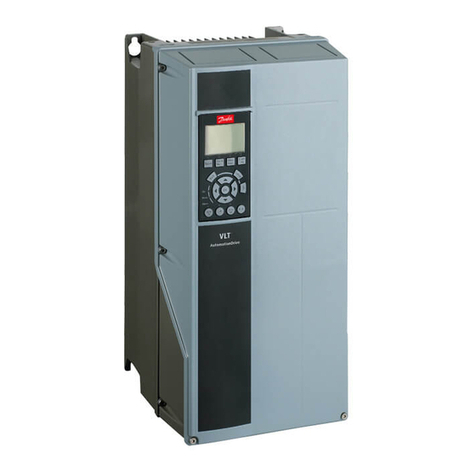
Danfoss
Danfoss VLT AQUA Drive FC 202 operating instructions
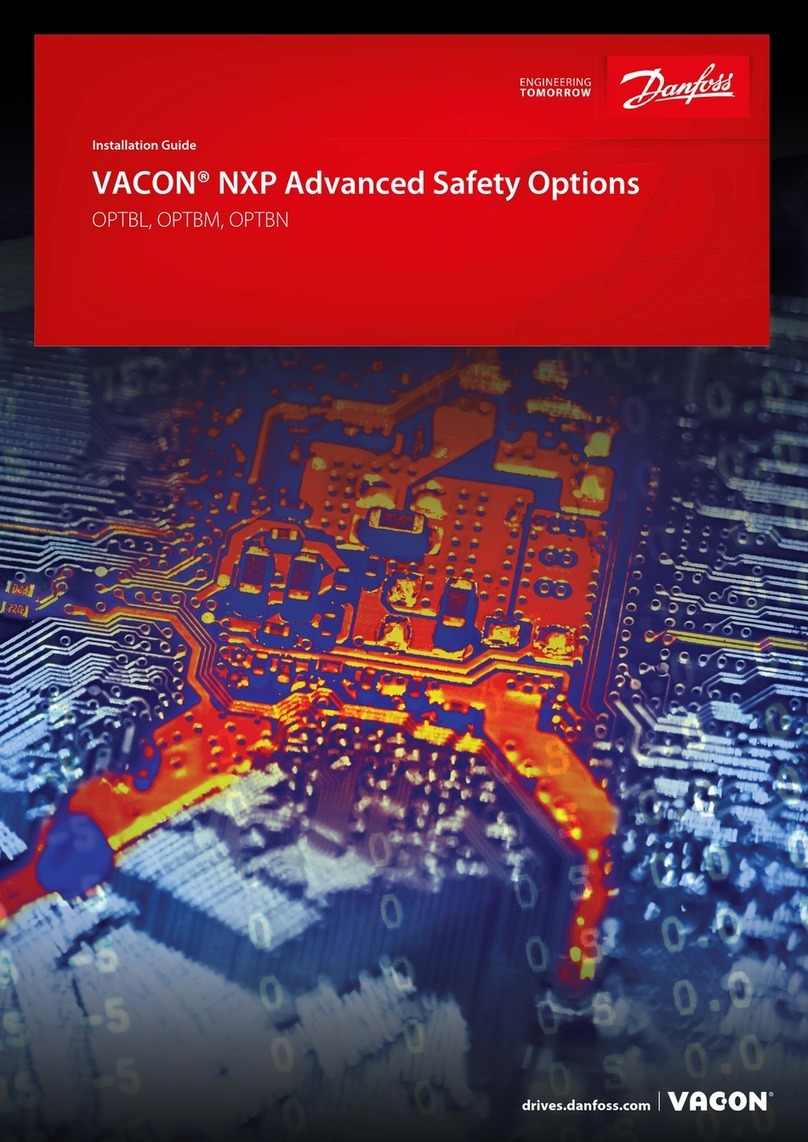
Danfoss
Danfoss VACON OPTEA operating guide
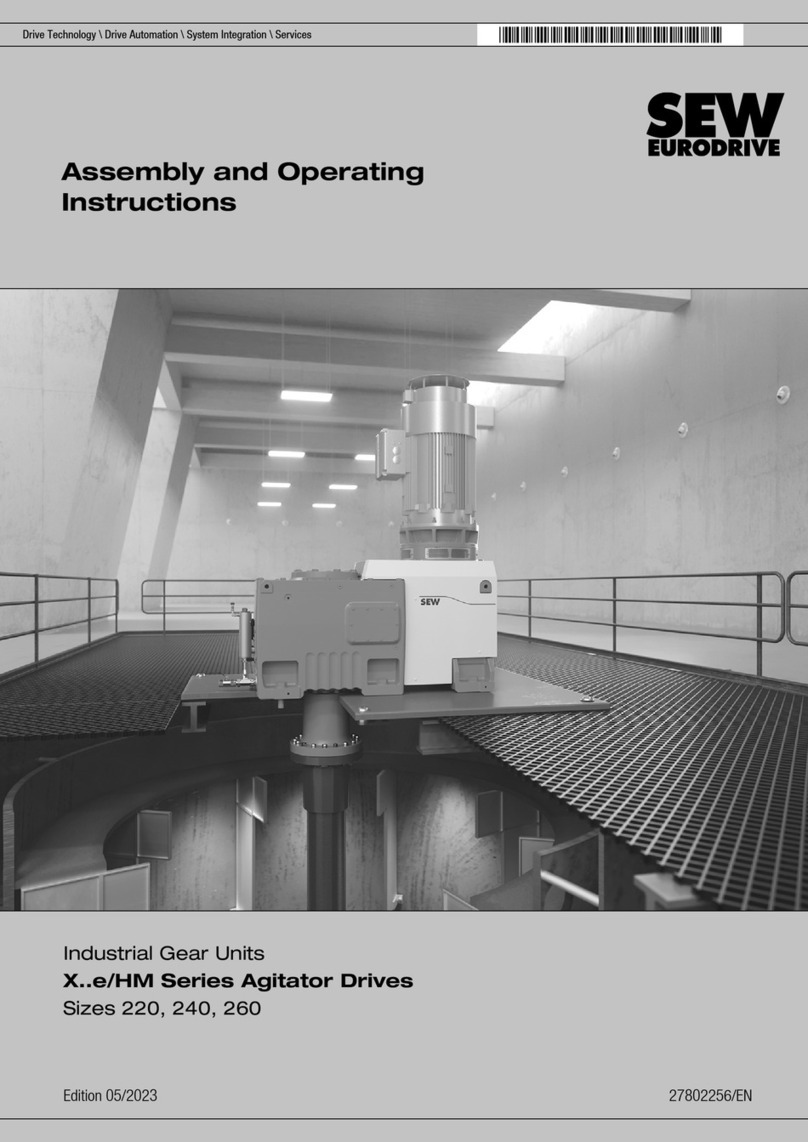
SEW-Eurodrive
SEW-Eurodrive X e/HM Series Assembly and operating instructions
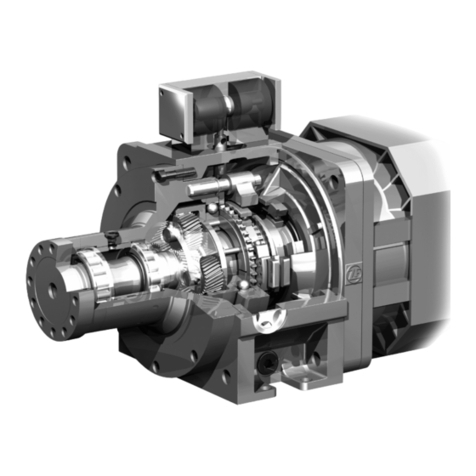
ZF-DUOPLAN
ZF-DUOPLAN 2K250 operating instructions

D+H
D+H FRA 11-BSY Plus Original instructions
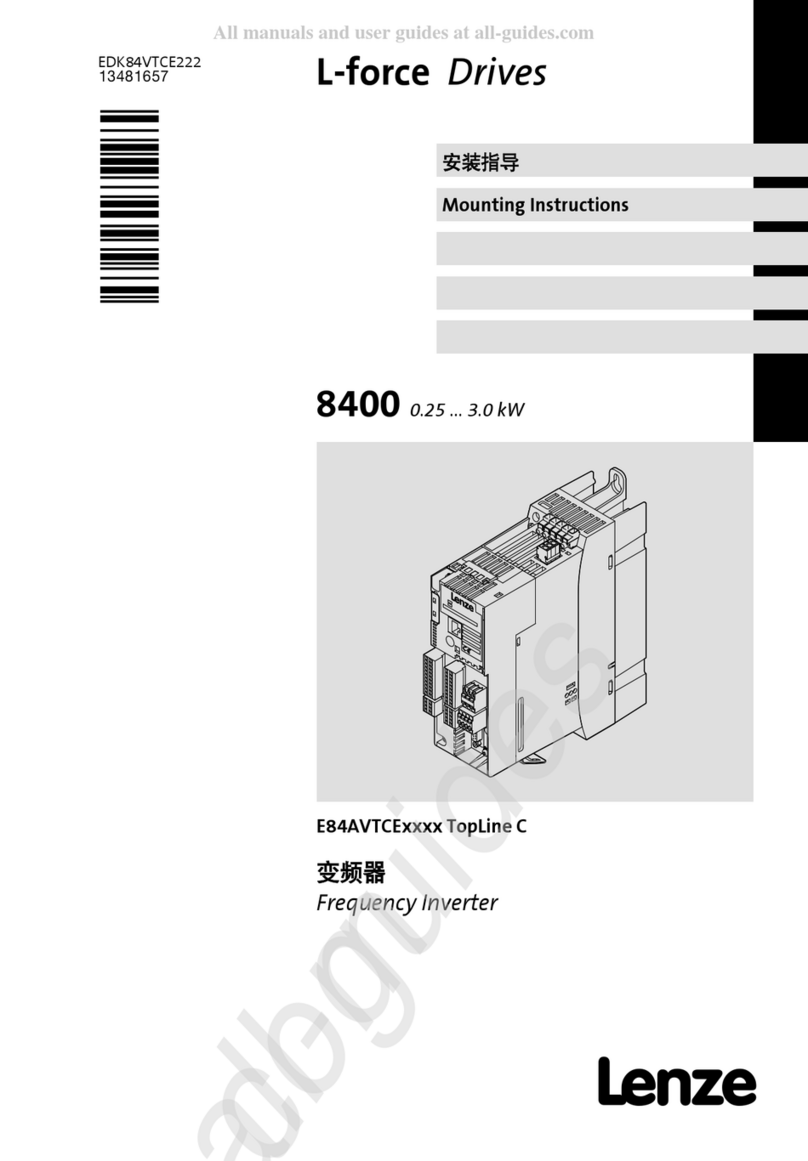
Lenze
Lenze L-force 8400 TopLine C Mounting instructions
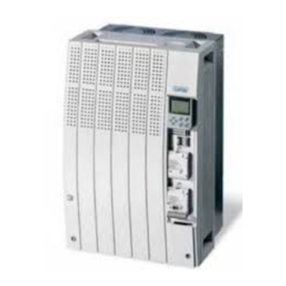
Lenze
Lenze 8200 vector System manual
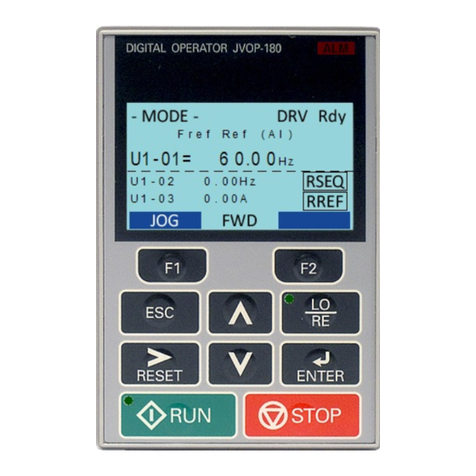
YASKAWA
YASKAWA Drive-V1000 installation manual

Amarillo
Amarillo 250 INSTRUCTIONS FOR REPAIRING

Penta KB Power
Penta KB Power Penta-Drive KBPW-240D Installation and operation manual
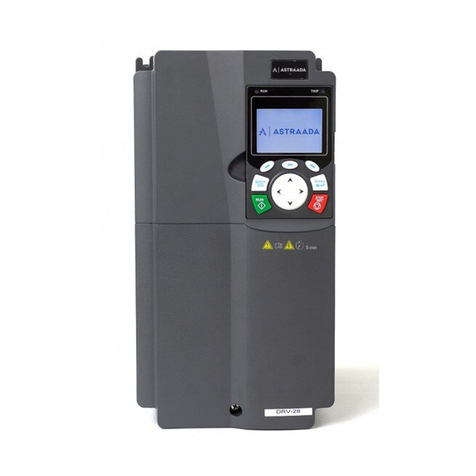
Astraada
Astraada DRV-28 Series Operation manual
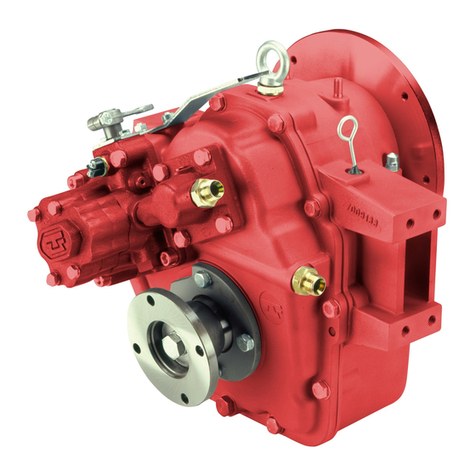
Twin Disc
Twin Disc TECHNODRIVE TM 880A operating manual
